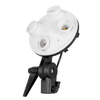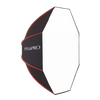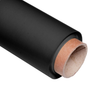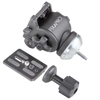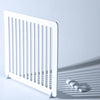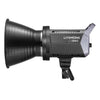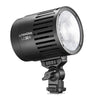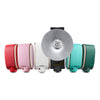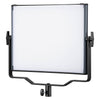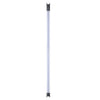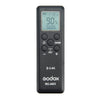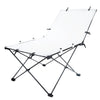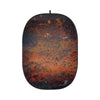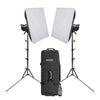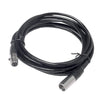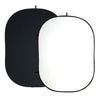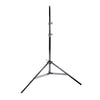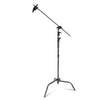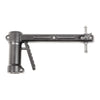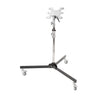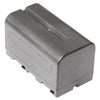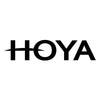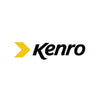Exploring the Godox LED Range - What Types Do We Stock?
The Godox LED range offers a wide selection of different options and features to suit any photographer or videographer’s lighting needs from heads to LED panels and RGB. But if you’re new to LED lighting, what should you use for your projects? We’ve laid out a full guide to show you what LED lighting is suitable for you and the different options we offer.
LED Heads vs LED Panels
LED heads, such as the Godox SL Series or the VL Series, are perfect for photography purposes, particularly those such as portraiture photography or product photography. This is due to their large LED chips, which act as a super-concentrated source of light which is great for lighting small numbers of subjects, such as one model or product as it will focus on the subject. LED heads can also be used as a fill light on the background. This is often helped by using reflectors on the units to help direct the light.

Alternatively, LED panels work by using many smaller chips or bulbs on a flat panel, allowing for a much more consistent and wide spread of light that is great for lighting larger spaces and subjects, or multiple subjects. An example of this can be found in the Godox LD Range. Panels can be used for just about anything, but it’s for the aforementioned reasons that they are much better suited to be used for videography or theatre, where they will be used to light a whole set or a scene.

Other LED formats are those such as mini-panels or LED Sticks, such as the LC500R Light Sticks or the popular TL range, which are primarily used for creative projects. These are often used for on-the-go photography or for small subjects due to their compact sizes but can also be used to backlight certain subjects. They are also great for smartphone-based creatives, such as seen with the LED M150.

Light Output
LEDs can also come with different modes of light output. Primarily these are:
- Daylight Balanced
- Bi-Colour
- RGB
Daylight Balanced means that the colour temperatures are balanced to give the same effect that the sunlight would give if the subject was outdoors. This is handy for when you need to shoot in a studio but need to give the lighting a sunlight warmth to it that you wouldn’t be able to achieve otherwise.
Bi-Colour lighting can also achieve daylight balancing but will also be able to achieve a tungsten-light effect if your aim is to achieve a more artificial light effect. This is good when you’re shooting in a location that already has lighting that you’d like to add to or emphasise. Bi-colour lighting can also be changed to cover brighter, colder colour temperatures or a sunny, golden hour effect.
Examples of these can be found in the Godox Litemons LA range, with the Litemons LA150Bi and the Litemons LA150D.

Alternatively, you also have RGB lighting, which is built for creative purposes, and can achieve a huge range of colours depending on the model of lighting that you use. RGB LEDs often feature daylight balancing or bi-colour settings alongside the RGB.
RGB lighting primarily comes in wand or panel form, such as the VISO500 RGB Stick or the LD150R Panel, but there are studio head RGB lights, such as the Godox SZ150R RGB if you need the effects provided by a studio head.
Power Options
The two main sources of power for LED lighting are Mains Power or Battery Power. Both types have their own benefits, but it often comes down to what you need the lighting for.
Batteries are particularly great for location work, or where you are shooting somewhere new. Batteries are also easily charged and replaced when they run out of power. The downside, however, is that buying batteries and your unit can often be more expensive than buying a mains-powered light. You may also find yourself having to purchase a battery mount such as a V-Lock Battery Mount to be able to affix batteries to your units, which also runs the cost up further. Relying on batteries means you also run the risk of battery faults and damage, and them not holding charge as efficiently after you’ve used them regularly for a long period of time.
Most LED units that use batteries will feature the option for both mains lighting and battery power, such as on the ML30, but occasionally, batteries and mounts may have to be purchased separately for these lights (see the LD RGB Panels, where you have to purchase the V-Lock battery separately), giving you the same problem as before.

Mains lighting is great for studio working, especially if you have no need for batteries, and is much cheaper in comparison, meaning it is more commonly seen in ‘budget’ lighting options too. Lights built for the purpose of videography may more often be exclusively mains-powered too, due to them being expected to be used for hours at a time.
So what’s best for me?
Take your pick! We offer a huge range of Godox LED lighting options, each with different specifications and features, so you’re sure to find your perfect match on our website! Or if you’re still stuck, why not get in touch with our technical team at info@essentialphoto.co.uk and they will be able to advise you on your options.



